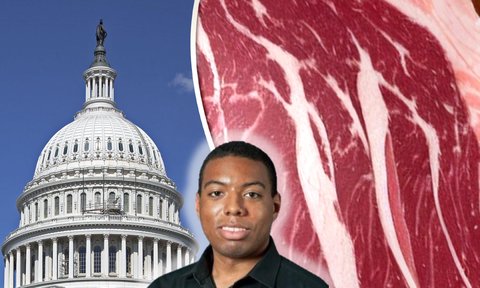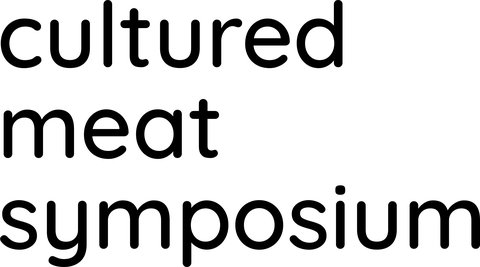Building Political Will to Fund Academic Research in Cellular Agriculture
May 16, 2023 - 7 min read
By taking the tools of tissue engineering and adapting them to work on a scale as large as agriculture, cell-cultured meat could change the world. But first, we need political will to fund foundational academic research in this field.
In September 2022, U.S. President Joe Biden announced an initiative to supercharge biomanufacturing in the United States and, excitingly, cell-cultured meat was directly mentioned. His executive order tasked public bodies, including the Departments of Energy, Agriculture, Defense, and Health and Human Services, among others, with submitting detailed plans on how to advance the bioeconomy in their respective sectors. The new initiative targets fields ranging from biopharmaceuticals and cell-based therapies to agriculture and food—including foods made from cultured animal cells. With many specific policy and funding details remaining yet to be announced, to date, over $2 billion has already been earmarked under the plan. While this is promising news for many biotechnological sectors, it largely overlooks a key component necessary for the development of cell-cultured meat technologies, namely, the need for public academic funding.
Although advocates in the cellular agriculture space have made persuasive arguments to increase academic support for the field, most of Biden’s funding has thus far been aimed at the private sector. To be clear, this is by no means a negative development; cell-cultured meat products have already been launched internationally and more are slated to begin appearing in U.S. markets. A recent report from the FAO and WHO shows a number of other countries are following suit and beginning regulatory approval processes for cell-based food technologies. In order for these products to ever become more than mere novelties, significant investments in infrastructure—such as those outlined under Biden’s initiative—are absolutely needed.
But so far, cultured meat R&D has largely remained limited to a competitive, quickest-route-to-market focus of the private sector. In this context, technologies designed to address problems of scale primarily target the production of relatively simplistic unstructured products, like ground meat, and semi-structured products that only partially recreate the fibrous texture of whole-cut meats, like steaks and filets. This approach to R&D seems unlikely to produce new understandings that will allow for the engineering of more complex, multi-fascial structures that represent a large portion of the demand for slaughtered animal meats and which will be necessary for the technology to have the impact it promises.
Bridging complementary fields
While cellular agriculture and other emerging protein technologies would fit squarely within political frameworks focused on environmental and climate-tech development, so far there has been little traction to financially support academic research in these fields. Aside from two consortiums at UC Davis and Tufts University, there is currently no large-scale academic infrastructure in the United States dedicated to foundational cell-cultured meat research. To remedy this, I believe emphasizing the overlap between cell-based meat engineering and biomedical tissue engineering—specifically cell therapeutic engineering—is needed in advocacy efforts for cellular agriculture.
Despite having distinct goals, cultured meat and cell therapeutic engineering can be considered as sub-disciplines of the tissue engineering field, rather than separate research spaces. As there are already wells of political will for funding cell-based therapies and other fields of biomedical engineering, broadening recognition of cell-cultured meat as a subdiscipline of tissue engineering could do wonders for encouraging both public and nonprofit funding agencies, as well as scientific talent, to opt into this space. And the advantages would not be one-sided: this approach will facilitate mutually beneficial development of foundational biology and engineering principles within the often-overlooked intersections of these disciplines.
Intersections are abundant
For example, some of the key questions that must be answered in order to produce cell-cultured meats with complex, multi-fascial structures containing skeletal muscle, fat, bone, and marrow tissues are exactly the same kinds of questions biomedical tissue engineers think about daily: how to successfully co-culture various cell types with different metabolic and biochemical needs; biofabrication strategies for the assembly of complex tissues; and development of massively parallel bioreactor systems to produce tissues that require dynamic inputs in a scalable way.
These may seem like gargantuan tasks, and in many ways, they are. But they are also paramount to any tissue-engineered product becoming practical to produce for consumers. Having a more thorough understanding of the physiology of these skeletal muscle systems is imperative to creating more complex tissue structures for cultured meat products and will provide small victories that can be readily applied to cell therapeutic strategies along the way.
Another focus common to both cell-based therapeutics and cell-cultured meat research regards the media used to grow cells. Developing low-cost, FBS-free media formulations is one of the top priorities and key constraints to producing cell-cultured meats at scale and with competitive pricing. However, this is just as important for safely producing therapeutics that reintroduce a patient’s immune cells (like CAR-T cell therapies for certain cancers) back into their body without also introducing animal-derived sera that could prompt an immune response. As these therapies become more effective and widely used, having cheap but safe media to grow these cells will equally help make them more affordable and accessible to those who are un- or underinsured.
Other areas of interest common to both cell-based therapy engineers and cellular agriculture researchers include scaffolding materials and how factors such as mechanical load affect tissue growth, development, and differentiation. The development of reprogrammed stem cells has also been an enabling factor of biomedical tissue engineering and is being applied to other species to develop more predictive animal models of disease. However, knowledge gained in this vein can also be applied to cell-cultured meat research, and vice-versa.
The path to better biotech
Some critics have argued that cellular agriculture technology will not address food security concerns in low-resource settings and may actually contribute to food system inequalities. However, such arguments fail to take a long view of the field’s potential if it receives proper academic funding.
Any potentially transformative new technology carries risks with regard to how it is ultimately controlled, utilized, and distributed—and cultured meat is no exception. As the field develops, it is critical to continue discussions around implementation strategies that are inclusive of all communities and stakeholders, especially in dialogues with policy makers and consumers.
But it is also important to remember that cultured meat is still in its technological infancy. Back in the early 2000s, when tissue engineering was only just becoming recognized as a field in its own right, similar arguments could have been made about such technologies being exclusive and exacerbating inequalities in access to certain therapies. But now, for instance, we see engineered blood vessels being used to treat trauma injuries within a war setting in Ukraine.
Because of the distinct foci, incentives, and risk tolerances of academic vs. industrial research, each sector is poised to fill complementary roles in the pipeline from discovery to the deployment of any biotech innovation. This article suggests that large-scale public and nonprofit funding must be invested in foundational academic research on the tissue engineering of meat—specifically in subjects that are not currently targeted under private-sector R&D funding models.
The open and public nature of such findings will also allow for innovations to be shared and applied more broadly than those that are kept secret or monopolized behind intellectual property protections. Such collaborative information sharing is especially vital in a fledgling field with so many daunting and unanswered questions essential to laying a strong foundation for its long-term feasibility.
The question, therefore, goes back to the beginning of this essay: how to incentivize and build political will to fund such research?
Lighting the way forward
For decades, tissue engineering has belonged exclusively to the field of biomedical science. Now, new applications are showing these technologies may have significant potential to positively impact the food and agricultural sectors as well. But compared to medical science, food is far more prone to cultural, social, and political sensitivities that can constrain evidence-based policy making and the allocation of funds where they may be most effective. Rather than rallying behind a movement that contributes to such issues, advocates and researchers in cellular agriculture may find a neutral framing of their work more effective.
In particular, highlighting the complementary nature of cell-cultured meat research with cell-based therapeutics and foundational tissue engineering could help create stronger political will to fund academic study in this field. While foundational scientific research can demand long-term thinking, it can also result in valuable near-term gains based upon discoveries made along the way. Research conducted for NASA’s space exploration program, for example, has resulted in thousands of advances in medical science, industrial techniques, and household goods when they were applied to other sectors.
Cell-cultured meat does not just hold the promise to radically improve how we produce food and interface with our environment. By taking the tools and techniques of tissue engineering and adapting them to work on a scale as large as agriculture, it also has the potential to change the world in ways we cannot yet imagine.


















